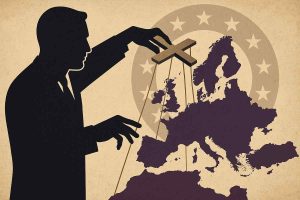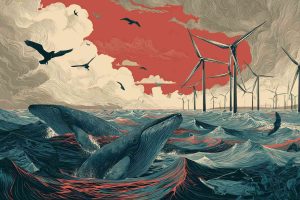Brussels’ flood agenda: how EU policy causes disasters while blaming the climate

The European Union likes to present itself as the guardian of nature and protector of biodiversity. Under this banner, a range of environmental policies are rolled out that supposedly serve the planet, but which are increasingly destructive to human life and infrastructure. One of the most controversial developments is the large-scale removal of dams, weirs, and other water-regulating infrastructure under the guise of “restoring natural river dynamics” and promoting “biodiversity.”
Yet when these measures lead to catastrophic floods, EU institutions and national governments quickly shift the blame to the “climate crisis” , a rhetorical smokescreen used to justify further centralization of power and environmental control.
EU policy: rewilding rivers and dismantling protection
The EU Biodiversity Strategy 2030
In 2020, the European Commission launched its EU Biodiversity Strategy for 2030, part of the broader Green Deal. This strategy explicitly promotes the “free-flowing” restoration of at least 25,000 kilometers of rivers by 2030 (EU Biodiversity Strategy for 2030, European Commission). In practice, this means the removal of thousands of dams, sluices, and flood-control structures that were built over decades to protect towns, farmland, and infrastructure.
Under the ideological cover of “rewilding,” Brussels wants to return rivers to their “natural state.” While this may sound ecologically noble in theory, in practice it often removes physical barriers that were built to prevent flooding. Rivers are again “allowed to breach their banks,” which effectively means that flooding is no longer being prevented, but facilitated.
The Netherlands: Room for the River
The Netherlands is a frontrunner in implementing these EU goals. Since 2007, its Room for the River program has given more space to river water by lowering dikes, excavating floodplains, and dismantling protective infrastructure. These measures are presented as “climate adaptation,” but many residents and experts question their actual effectiveness. When areas later flood, officials cite “extreme weather” while ignoring the fact that protection was consciously removed.
The rise of flooding: accident or consequence?
Germany 2021: the Ahr Valley disaster
In July 2021, Germany experienced one of its deadliest floods in decades, especially in the Ahr Valley. Official narratives blamed “unprecedented rainfall caused by climate change.” But hydrology expert Hannah Cloke (University of Reading) pointed out that the disaster was worsened by failures in the warning system and inadequate infrastructure (Flood disaster in Germany: Is climate change to blame?, Deutsche Welle). The region had previously removed dams and artificial channels as part of EU-funded river restoration programs.
Moreover, data from the European Environment Agency show that flood fatalities across Europe actually declined between 1980 and 2010, until policy changes focusing on “river restoration” and dam removals took hold. The timing suggests a shift not in the weather, but in policy.
France: dam removals in Brittany
In Brittany, dozens of dams were demolished between 2018 and 2023 under EU-funded programs like Life+ Eau et Rivières de Bretagne. Local residents protested these removals, noting that the dams helped protect against flash floods after heavy rains. Still, demolitions continued, supported by billions from the EU LIFE fund. When Brittany experienced floods in 2023, once again the blame was pinned on “climate change” (Barrages enlevés, inondations aggravées, Le Figaro).
Why this policy direction? Political interests behind flood risk
The climate crisis as a policy tool
By attributing natural disasters to the “climate crisis,” governments and EU institutions create an ongoing justification for consolidating power. Floods are presented as proof that “urgent action” is needed, which typically means more legislation, higher taxes, and further supranational authority.
The cycle is familiar. A disaster strikes, media show shocking footage, politicians call for “climate measures,” and more funding flows toward EU programs like the Green Deal, the Just Transition Fund, and RePowerEU.
Are protections removed deliberately?
Some researchers suggest that the removal of flood protection infrastructure is not just ecologically motivated but also political. By making areas more vulnerable, floods can serve as physical “evidence” of a supposed climate crisis. Researcher Marcel Crok argues in De staat van het klimaat that climate policy is often built on selective data and biased interpretation (De staat van het klimaat, Marcel Crok). When policy causes disaster, the disaster is then used to justify more of the same policy.
It is a vicious cycle. First dismantle protection, then blame the resulting floods on CO₂ emissions, then impose stricter environmental rules that worsen the root cause.
Climate change or policy failure?
Scientific nuance
Yes, warmer air can hold more moisture, potentially leading to heavier rainfall. But multiple studies show that urbanization, land-use change, and policy decisions are far more important in determining flood risk. A 2021 study from World Weather Attribution about the German floods acknowledged a possible contribution from climate change, but concluded that infrastructure failures and lack of preparedness played a much larger role (Attribution of extreme rainfall and flooding in western Europe during summer 2021, World Weather Attribution).
Additionally, a 2020 study by the European Joint Research Centre (JRC) confirmed that many EU countries have deliberately reduced their flood protection under pressure from EU biodiversity goals (Hydromorphological alterations and flood risk in Europe, JRC). These are not natural disasters, they are policy-driven disasters.
Ignoring alternative strategies
Countries like Japan show that it is perfectly possible to combine high-tech water management (such as underground reservoirs and modern dams) with environmental protection. Yet the EU deliberately chooses an ideological course in which “nature restoration” becomes dogma, even if it costs lives and livelihoods.
Who benefits?
Subsidy networks and consultancies
Large engineering and consulting firms like Arcadis, Witteveen+Bos, and Royal HaskoningDHV earn millions by designing and executing “nature-inclusive” water projects. These projects are typically funded by EU programs such as LIFE, Horizon 2020, or the Cohesion Fund. Local governments follow the money, not the science.
Political consolidation
Disasters are useful. They are weaponized to justify tighter control, more laws, and more EU centralization. Legislation like the Nature Restoration Law, passed in 2024, now forces member states to give back large parts of their territory and waterways to “nature,” regardless of local needs or safety concerns. This is environmental colonialism dressed up as climate action.
Conclusion
The European Union is pursuing environmental policies that, under the banner of biodiversity and climate adaptation, are actively contributing to flooding in Europe. By removing dams, opening floodplains, and dismantling critical infrastructure, the EU is making regions more vulnerable. And when the predictable flooding occurs, officials turn around and blame it on the “climate crisis.”
This manipulative strategy enables Brussels to centralize more power, redirect public funds to technocratic projects, and erode national sovereignty, all while portraying itself as the savior of the planet.
What Europe needs instead is a return to rational water management, local accountability, and technological solutions, not ideology-driven policies that destroy protection and then exploit the destruction for political gain. A Union that sacrifices safety for utopian environmental goals is not serving its citizens, but endangering them.
References:
- EU Biodiversity Strategy for 2030, European Commission
- Flood disaster in Germany: Is climate change to blame?, Deutsche Welle
- De staat van het klimaat, Marcel Crok
- Barrages enlevés, inondations aggravées, Le Figaro
- Attribution of extreme rainfall and flooding in western Europe during summer 2021, World Weather Attribution
- Hydromorphological alterations and flood risk in Europe, Joint Research Centre (JRC)
- Nature Restoration Law, European Commission


















